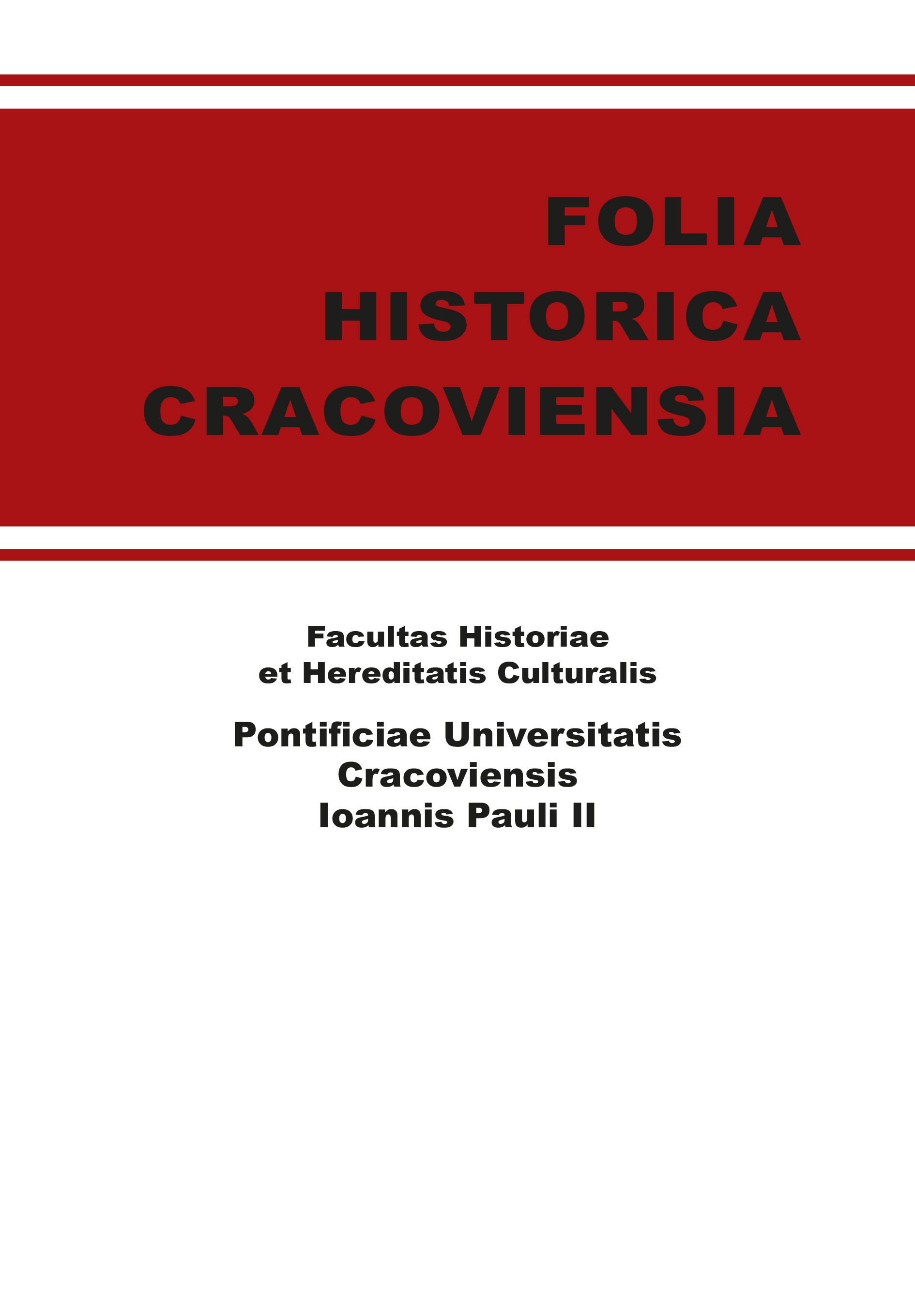The dispute over the appointment to the position of the commendatory abbot on Łysa Góra (Bald Mountain) during the interregnum after the death of John III Sobieski in the light of Nuncio Giovanni Antonio Davia’s correspondence
DOI:
https://doi.org/10.15633/fhc.656Keywords:
monastery of Holy Cross, Holy Cros Abbey, commendatory abbot, nuncio DaviaAbstract
One of the issues which for many years, beginning from the end of the 16th century, caused a lot of tension between the Holy See and the Kingdom of Poland, was the matter of the appointment for the position of commendatory abbots, where kings were eager to keep their privileges of nomination. Another factor exerting influence on the course of the conflict was the opinion of the nobility which, however, largely depended on the decision of the king. This dependence disappeared in periods of interregnum and hence it was interesting to study, on the example of disputes over the appointment to the dignity of abbot in the Benedictine Abbey of the Holy Cross, what form that dispute took at a time when decisions were solely in the hands of the nobility. The course of the conflict over the appointment to the positions of abbots during the interregnum after the death of John III Sobieski indicates that the nobility retained their independence in the dispute, and the privileged positon of the king was taken over by ambitious magnates favouring their relatives and supporters while appointing to the dignity of the abbot. The key here was to convince regional diets to their arguments, as well as to win the favour of the senate, and later the convocation parliament (sejm), which, in order to fulfil their ambitions, did not hesitate to even call into question the relationship with Rome.
References
Archivio Segreto Vaticano, Rkps Segreteria di Stato, Polonia 118.
Acta Nuntiaturae Polonae. T. 37: Giovanni Antonio Davia (1696–1700). Vol. 1: (13 II 1696 – 28 XII 1696). Ed. A. Kęder. Cracoviae 2004.
Acta Nuntiaturae Polonae. T. 37: Giovanni Antonio Davia (1696–1700). Vol. 2: (23 VI 1696 – 18 V 1697). Ed. A. Kęder. Cracoviae 2010.
Mirecki Ch., Protestatio… Ac aliorum nonnulorum Monachorum facta contra electionem D. Wuyhowski, facta in actis Nuntiaturae die prima et decima Februarii 1690. Cracoviae [1690].
Volumina legum. Przedruk zbioru praw staraniem XX. Pijarów w Warszawie, od roku 1732 do roku 1782, wydanego. T. 1–2, 6. Petersburg 1859, 1860.
Jastrzębski J. OMI, Klasztor Świętego Krzyża na Łyścu. Kielce 1983.
Kanior M. OSB, Rola ojca Stanisława Krzysztofa Mireckiego, opata świętokrzyskiego w powstaniu Polskiej Kongregacji Benedyktyńskiej Świętego Krzyża. W: Klasztor na Świętym Krzyżu w polskiej kulturze narodowej. Pod red. ks. D. Olszewskiego, R. Gryza. Kielce 2000, s. 125–137.
Kęder W., Stolica Apostolska wobec Rzeczypospolitej w okresie konfederacji barskiej 1767–1773. Opole 2006.
Pastor L. von, Storia dei papi dalla fine del Medio Evo. Compilata col sussidio dell’archivio segreto pontificio e di molti altri archivi. Vol. 14: Storia dei papi nel periodo dell’Assolutismo dall’elezione di Innocenzo X sino alla morte di Innocenzo XII (1644–1700). Pars 2: Innocenzio XI, Alessandro VIII, Innocenzio XII (1676–1700). Przeł. P. Cenci. Roma 1932.
Downloads
Published
Issue
Section
License
Copyright (c) 2014 Wojciech Kęder

This work is licensed under a Creative Commons Attribution-NonCommercial-NoDerivatives 3.0 Unported License.
Authors who publish with this journal agree to the following terms:
- Authors retain the copyright and full publishing rights without restrictions, and grant the journal right of first publication with the work simultaneously licensed under a Creative Commons Attribution 4.0 International License that allows others to share the work with an acknowledgement of the work's authorship and initial publication in this journal.
- Authors are able to enter into separate, additional contractual arrangements for the non-exclusive distribution of the journal's published version of the work (e.g., post it to an institutional repository or publish it in a book), with an acknowledgement of its initial publication in this journal.
- Authors are permitted and encouraged to post their work online (e.g., in institutional repositories or on their website) prior to and during the submission process, as it can lead to productive exchanges, as well as earlier and greater citation of published work (See The Effect of Open Access).

